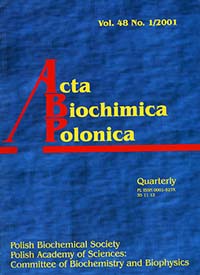The interactions of phthalocyanines with stimulated and resting human peripheral blood mononuclear cells.
Abstract
The interactions of two metal-free phthalocyanines [(H2Pc) and Solar Pc (with four peripherical groups: SO2N(CH2CH2OH)2)] and of one metal substituted dye (CoPc) with resting and stimulated human peripheral blood mononuclear cells (PBMC) were compared. The absorption, fluorescence, photoacoustic and EPR spectra of both resting cells and cells stimulated by phytohaemagglutinin, incubated in dimethyl sulfoxide (DMSO) with very low or 95% water content and with or without dye addition, were measured. The fate of the light absorbed by the samples was investigated. It is known that singlet oxygen production is crucial for photodynamic action of dyes. Thermal deactivation and luminescence emission compete with this process, so investigation of these alternative paths of sensitizer deactivation provides information about photodynamic action. The incorporation of the investigated dyes into cells and the perturbation of the cell structure caused by the dyes, the incubation solvent and the activator were investigated by comparing the spectral properties of PBMC before and after stimulation and incubation. Incubation of the cells for 1 h in a solution of Solar Pc in 99.5% aqueous DMSO, resulted in an efficient dye incorporation which was highly selective. Solar Pc being introduced much more efficiently into stimulated cells than into resting cells.Acta Biochimica Polonica is an OpenAccess quarterly and publishes four issues a year. All contents are distributed under the Creative Commons Attribution-ShareAlike 4.0 International (CC BY 4.0) license. Everybody may use the content following terms: Attribution — You must give appropriate credit, provide a link to the license, and indicate if changes were made. You may do so in any reasonable manner, but not in any way that suggests the licensor endorses you or your use.
Copyright for all published papers © stays with the authors.
Copyright for the journal: © Polish Biochemical Society.


